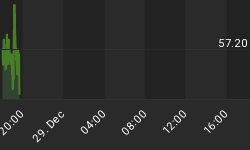Stock market practitioners are familiar with the notion indicating that the first 5 trading days of the stock market can foretell the direction of the major equity indices for the rest of the year. There is no comparable or reliable formula in the currency market, but the first 24 hours of trading of 2006 in the currency market contained 3 unpleasant economic developments for the US currency that may well resurface as the influencing factors of a dollar retreat into the rest of the year.
These are the following;
Jan 3 10:00 am NYT (NY Time): Weakest Manufacturing ISM in 4 months
The December ISM manufacturing index hit a 4-month low at 54.2 from November's 58.1, showing a broad decline across the price paid index (4-month low to 63.0), employment index (6-month low at 52.7) and new orders index (7-month low at 55.5).
The dollar fell across the board, after the manufacturing report story lent further credence to the slowdown story in the US that may become affirmed by an ensuing inversion in the yield curve.
Jan 3 2:00 pm NYT: FOMC Minutes Underline Fed's Near-term Hold
The Federal Reserve issued the minutes of its December 13 meeting, in which it changed the language of its policy statement hinting that any future tightening can no longer be assumed to be automatic and is only a function of the discretion of the Fed, which is dependent on the upcoming data. The minutes affirmed that: "Although future action would depend on the incoming data, this characterization of the outlook for policy was seen by most members as indicating that, given the information now in hand, the number of additional firming steps required probably would not be large".
Although the minutes offered no real fresh information, they reminded market participants that the Fed could lift its foot off the policy breaks after the January FOMC meeting, which we reiterate (since the Dec 13 FOMC meeting) to be the deliver the final rate hike of the current tightening campaign, producing a fed funds rate peak of 4.50% for the year. We expect 25-50 bps of easing to begin in Q4.
Despite the relative predictability of the minutes, the dollar fell nearly a full cent against the euro and over half a yen against the Japanese currency as traders further sought to position for a near-term peak in the dollar's yield advantage.
The combination of a weak ISM and the release of the FOMC minutes maintained the odds of a 25-bp January rate hike as high as 100%, which pushed the yield curve off its inverted formation. But these also raised the probability that rates may not be raised thereafter.
Jan 3 9:04 pm NYT PBOC Sets Yuan at highest rate vs. USD since July revaluation
The People's Bank of China set the central CNY/USD exchange rate at CNY 8.0702 per $1USD, the highest rate since the July 21 revaluation. The market then pushed the yuan to a new all time high of 8.0685, 2.5% above the pre-revaluation rate of 8.28. This took place on the same day of the beginning of OTC trading in the yuan where market-making banks will set the daily central rate of the currency.
Although our forecast of a Q4 revaluation did not materialize, we expect the PBOC to resort to other means of gradually lifting its currency, such as a rate hike in its discount rate or further crawling announcement of higher fixing rates. The impact of either moves promises to be dollar negative via an overall rally in Asian FX, that should transpose into the European FX (EUR, GBP and CHF) as well as the commodity currencies (AUD, CAD and ZAR).
The combination of these aforementioned events; (weak data, near conclusion of Fed's rate hikes and China's swaying of its currency) manifest what could be the major themes contributing to the dollar's retreat in 2006. Each of these aforementioned events contributed to the dollar's damage in the US Tuesday and Asian Wednesday morning sessions. EURUSD posted its biggest single day rise in 3 weeks (the week the Fed changed its language) to hit a 2-month high, while the yen is 6/10th of a yen away from its own 2-month highs versus the dollar.















